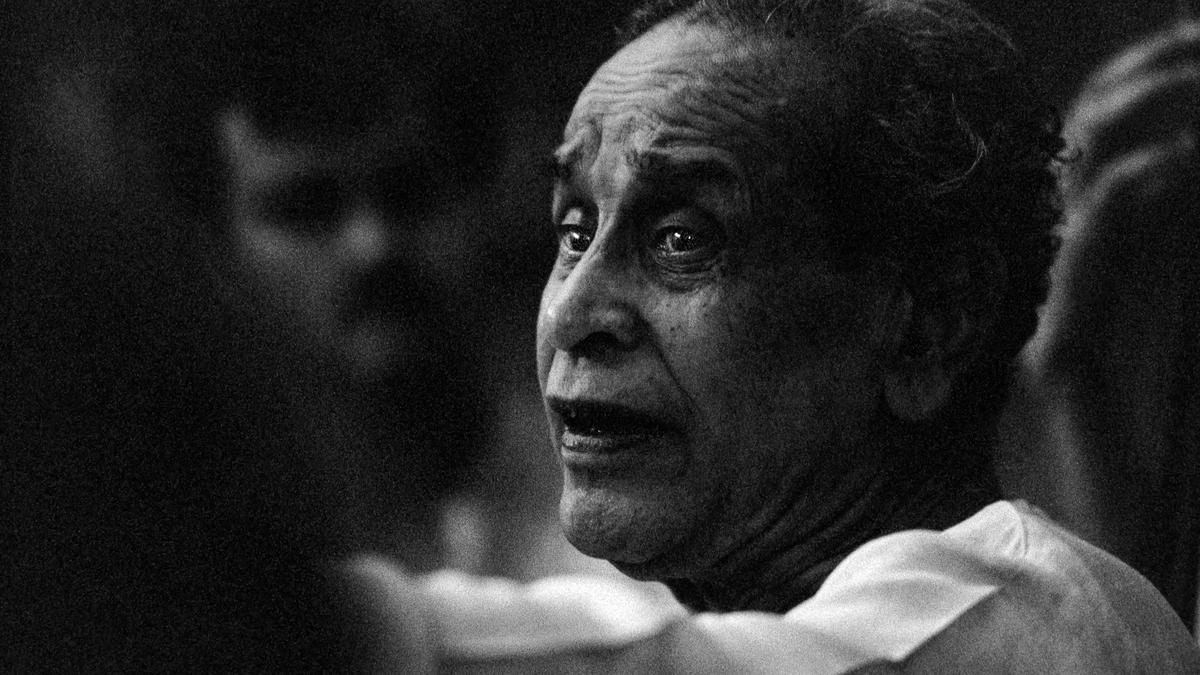Some view it as meditation. Some do it for fun. Some find it therapeutic. Others transition to it as a profession. Whatever the intent or end result, there is no denying that Bengaluru’s pottery community has been thriving in the last five years. Almost every locality now houses a pottery studio or class.
COVID-19 was one of the factors that is believed to have triggered the interest in pottery. Many owners of pottery studios in the city say people started taking hobbies seriously after the pandemic — everyone wanted a life beyond work and a creative outlet for themselves.
For many, the pandemic was the time when they needed something calming and therapeutic, and so they turned to pottery. Whether it is hand-building and working with tools, throwing clay on the wheel, getting pieces fired in the kiln or learning to glaze them, the city has slowly built the expertise and infrastructure so that all these bases are covered. Today, you can hire a modern potter’s wheel at home, rent studio spaces by the hour to practice your skill, take your finished works to studios to be fired in professional kilns, or if you are serious and have the means, set up a full-fledged studio at home.
Various stages of pottery making
| Photo Credit:
Special Arrangement
Most studios offer courses of different levels — beginners, intermediate and advanced — that run into a couple of days or months. What is rather popular is the two-hour “experiential” sessions, which appeal to all age groups. These sessions are often gifted to family and friends. Couples attend this session to do something meaningful together or celebrate an anniversary. Sometimes these sessions bring two or three generations together, spending quality time with each other.
Swathi Rao, who has been running Artfully Yours in HRBR Layout since 2016, observes how a lot of parents are now turning to pottery for their children with special needs — whether they are on the spectrum or have learning disabilities. On one hand, clay is a very primal element, and on the other, learning to throw clay on a wheel and spin it is scientific. She explains why clay and pottery work wonders for many.
“Pottery is a sensorial activity that helps these children. Clay in itself is a forgiving medium and a major confidence booster for children because you can easily undo your mistakes. It’s an open-ended medium and not intimidating. Children can connect to the medium from their perspective.” Swati has also worked with dementia patients, who have taken to this medium well.
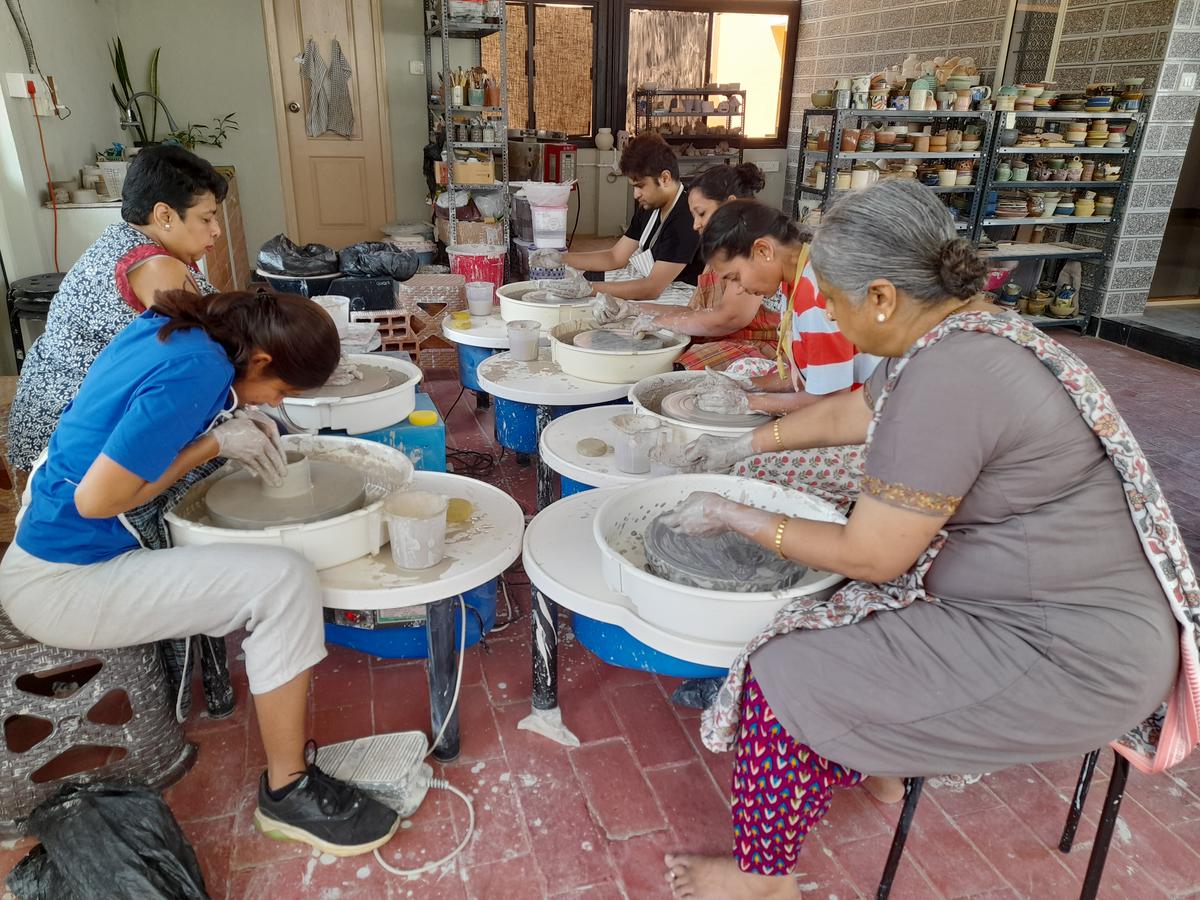
Various stages of pottery making
| Photo Credit:
Special Arrangement
Anupama Bhat, 44, an electrical engineer and former lecturer, details her pottery journey from her student days. She had her first experience with clay in 2007, when she was in the US studying for her Masters. Ever since, her love for clay and pottery has only grown — she attended a week-long pottery workshop in Art Canvas, Jayanagar, then started learning pottery from online videos. Around 2015, she bought herself a potter’s wheel, coaxed by her husband, who felt she was not happy at work. Soon after, she began refining her skills at the Mud Effects Pottery Studio in Whitefield.
“Since 2019, I’ve been doing pottery seriously. The feel of clay is addictive. During the lockdowns, the one thing I would look forward to after the day’s housework was working at my wheel. I started by making functional ware and home décor items — bowls, cups, mugs and trinkets. A few months ago, I hit a plateau, so now I’m experimenting with glazed miniatures,” says Anupama, who has now created her label “clayforu”.
She creates pieces as personalized gifts for family and friends. All her sales are by word of mouth and at exhibitions she participates in; an interest in all things handmade is one of the reasons why people buy pottery, she believes.
Social media, especially Instagram, has also played a large role in promoting a curiosity about pottery, observes Kanchana Chandrasekaran, Director of Clay Station Art Studio in Koramangala. It was Bengaluru’s first modern pottery studio set up way back in 2009 by Kanchana’s husband Ganesh Manickavasagam to understand clay as a medium. From starting off as a training facility, today they manufacture clay, consult internationally to set up studios, and have tied up with suppliers worldwide to source the best pottery infrastructure in India. (A stove-top kiln they created is said to have revolutionised the home-based terracotta jewellery industry.)

Various stages of pottery making
| Photo Credit:
Special Arrangement
Kanchana says there is a whole range of demographics interested in pottery — from IT professionals and homemakers, to architects and designers. “With the concept of art in education picking up, several schools in the city are introducing pottery in their curriculum,” says Kanchana. “It is also a viable profession now,” she adds.
On an average, at least 50 people are learning from Clay Station every month, across various kinds of workshops and courses. Some students have been with them for over two years now, learning at various levels, practicing at their homes, and coming back to do the next level. They even have an “arangetram” for intermediary level students to exhibit and sell their works. “We encourage our students to pass on their knowledge. Many of them start their own studios. It’s now become a large and growing community,” adds Kanchana.
Unable to deal with the stress in his corporate career, Balakrishna Vallepu took some time off and found himself in Goa, learning pottery at Banana Pottery under the mentorship of Thomas Louis (visiting professor and alumni of NID, Ahmedabad) for over six months. What began as a curiosity, turned into passion and led to the birth of his studio Yogam Pottery in Yelahanka New Town in 2018.
“I was merely curious about clay when I started, but stayed on to become a potter because I fell in love with the versatility of clay. The pursuit of beauty is an important focus in everything I do.” Pre-pandemic, he hosted a lot of corporate pottery workshops but post-pandemic has seen budget cuts for such activities with many in the sector working from home. During the pandemic, he found a lot of takers for another experiment — online pottery wheel workshops where he would send the wheel and materials to the students’ home and teach online, or teach people who had wheels at home, online.
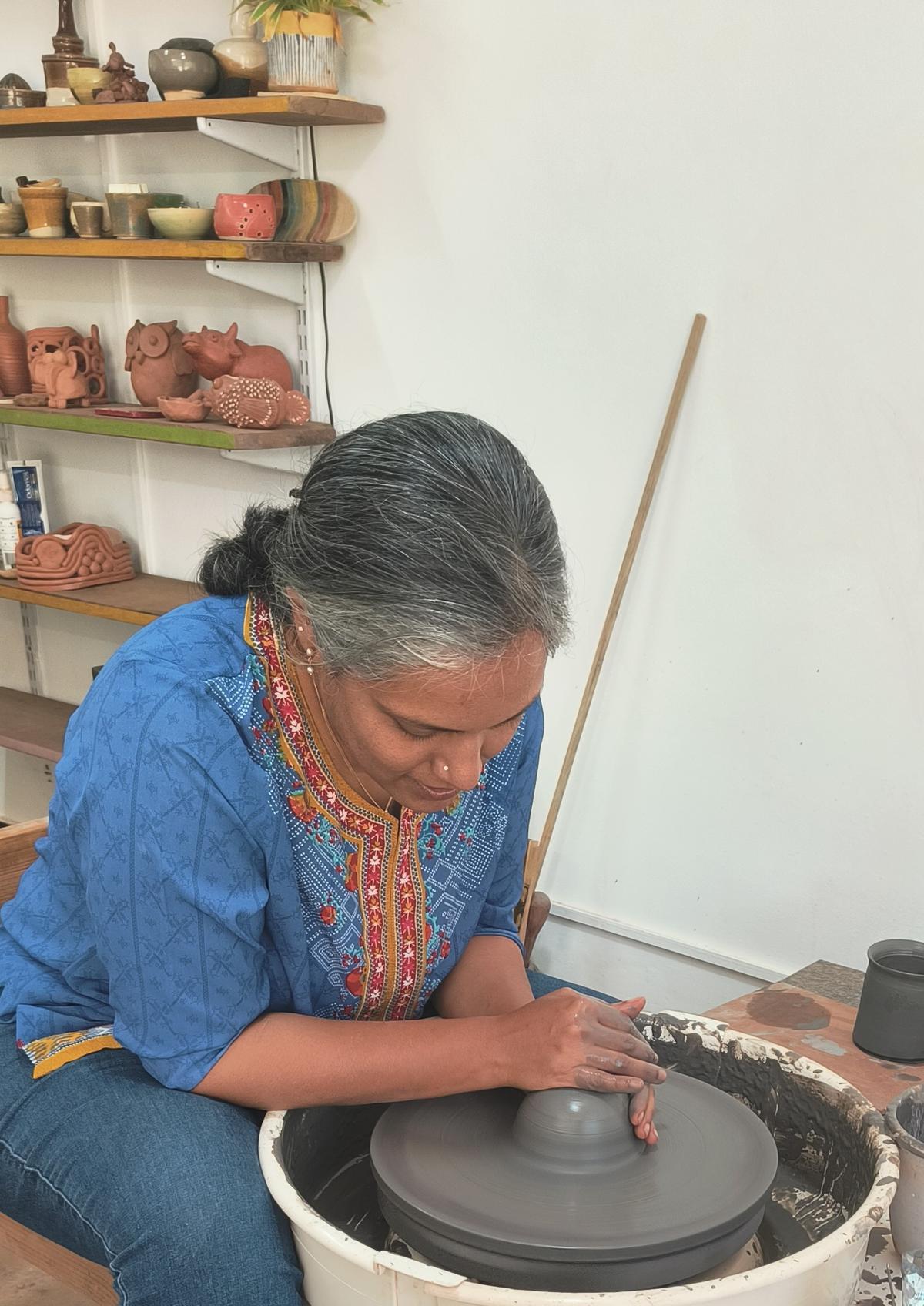
Swathi Rao at the wheel
| Photo Credit:
Special Arrangement
“A lot of people prefer to celebrate birthdays and anniversaries with a pottery experience where you create memories with your hands, rather than go out for an expensive meal.” The age range of his clientele is between 20 and 60, with college students flocking during vacations.
Clay is also a medium where you need to be mindful. The growing consciousness among people of mindfulness practices has also prompted the popularity of pottery. It is one of the reasons Swathi mostly does one-on-one teaching sessions and not batches, in order to “maintain a calm energy”. “Otherwise people tend to become too competitive; you only need to compete with yourself and better yourself.” She is currently learning a practitioners’ course on how clay can be used for wellbeing.
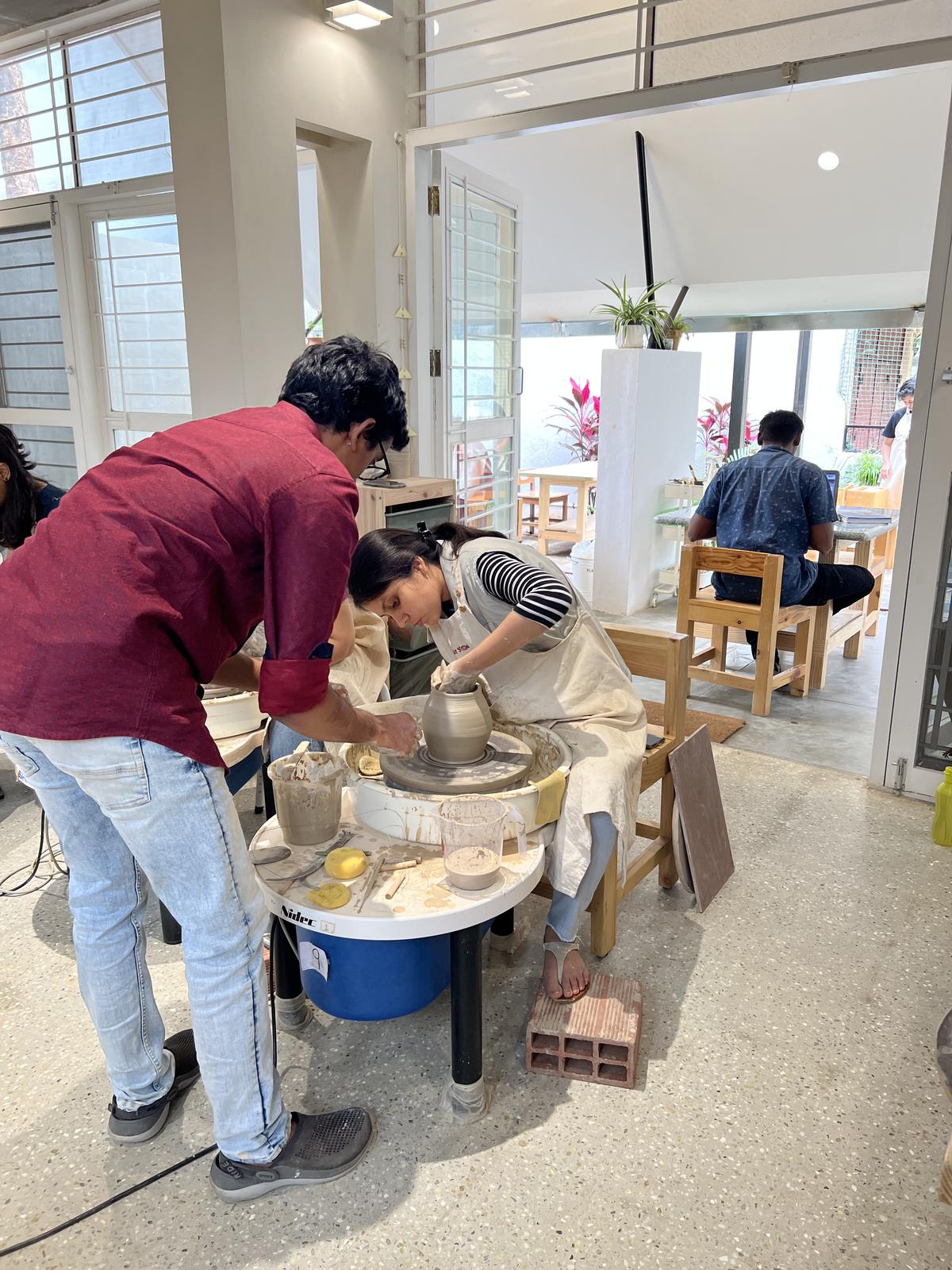
Various stages of pottery making
| Photo Credit:
Special Arrangement
Pottering around
*Anyone can work with clay at the beginner’s level, even without prior experience
*A one-time, two-hour pottery experience begins from ₹2,000 upwards
*Constructing, testing for elasticity, pinching, coiling, and making slabs are some of the techniques used in pottery; these are techniques we also use in cooking, without realising it.
*There are many forms and tools of pottery — using hands, simple pottery tools, wheel, casting using jigger-jollies and moulds etc. It is best, however, to start with hand building.
*Studios advise beginners not to fire their pieces because the clay then cannot be re-claimed and reused. It is a sustainable practice.
*A basic firing kiln starts upwards of ₹1.5 lakhs. A potter’s wheel starts at around ₹10,000 and can go up to ₹85,000 based on several features. Good clay can come at price range starting from ₹500. A basic hand-building tool set can cost around ₹5,000.
*Studios advise beginners to first try their hand, figure out how serious they are, practice in rentable studio spaces, and only then invest in equipment for a home setup.
(Inputs from people interviewed in the story)
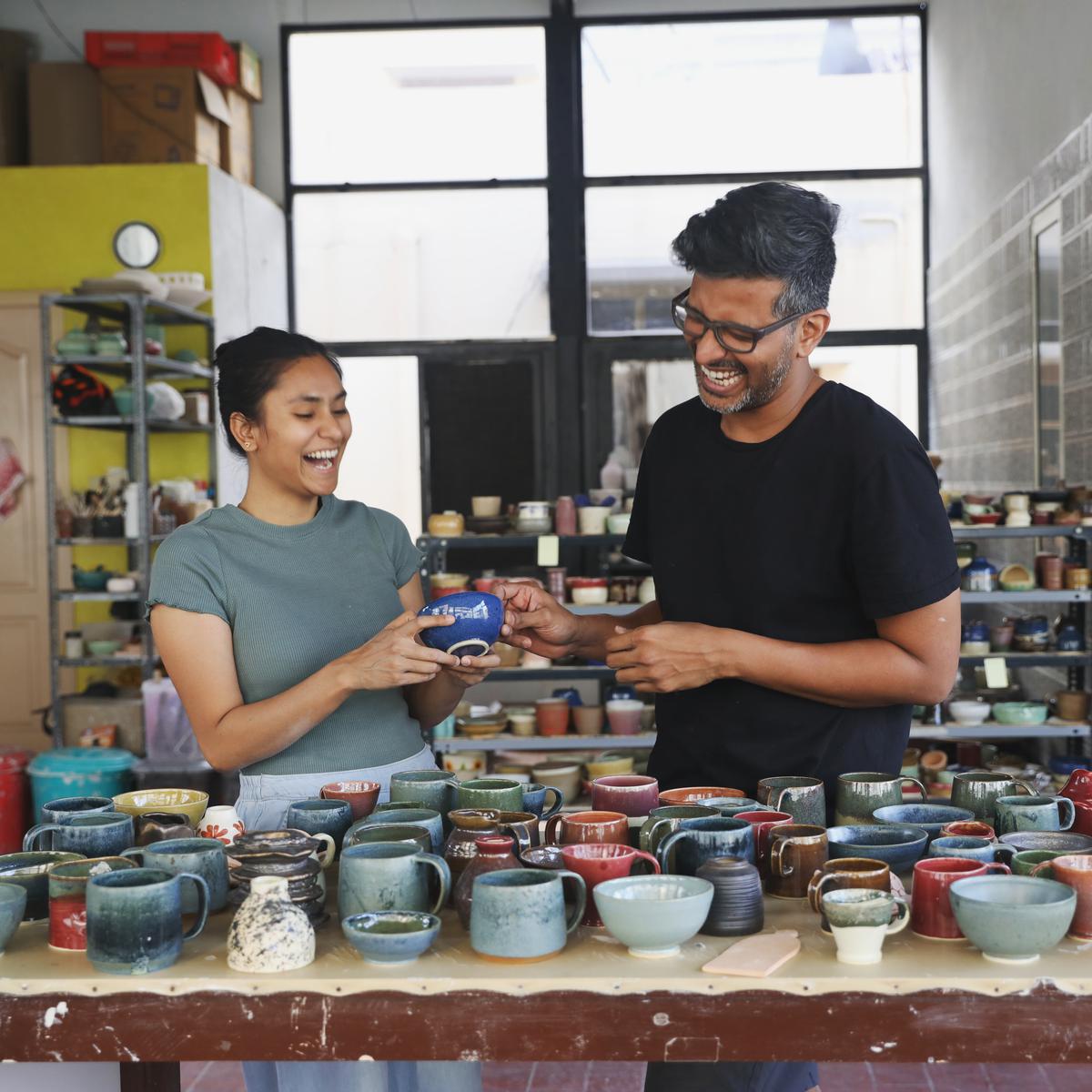
Various stages of pottery making
| Photo Credit:
Special Arrangement



.jpg)


